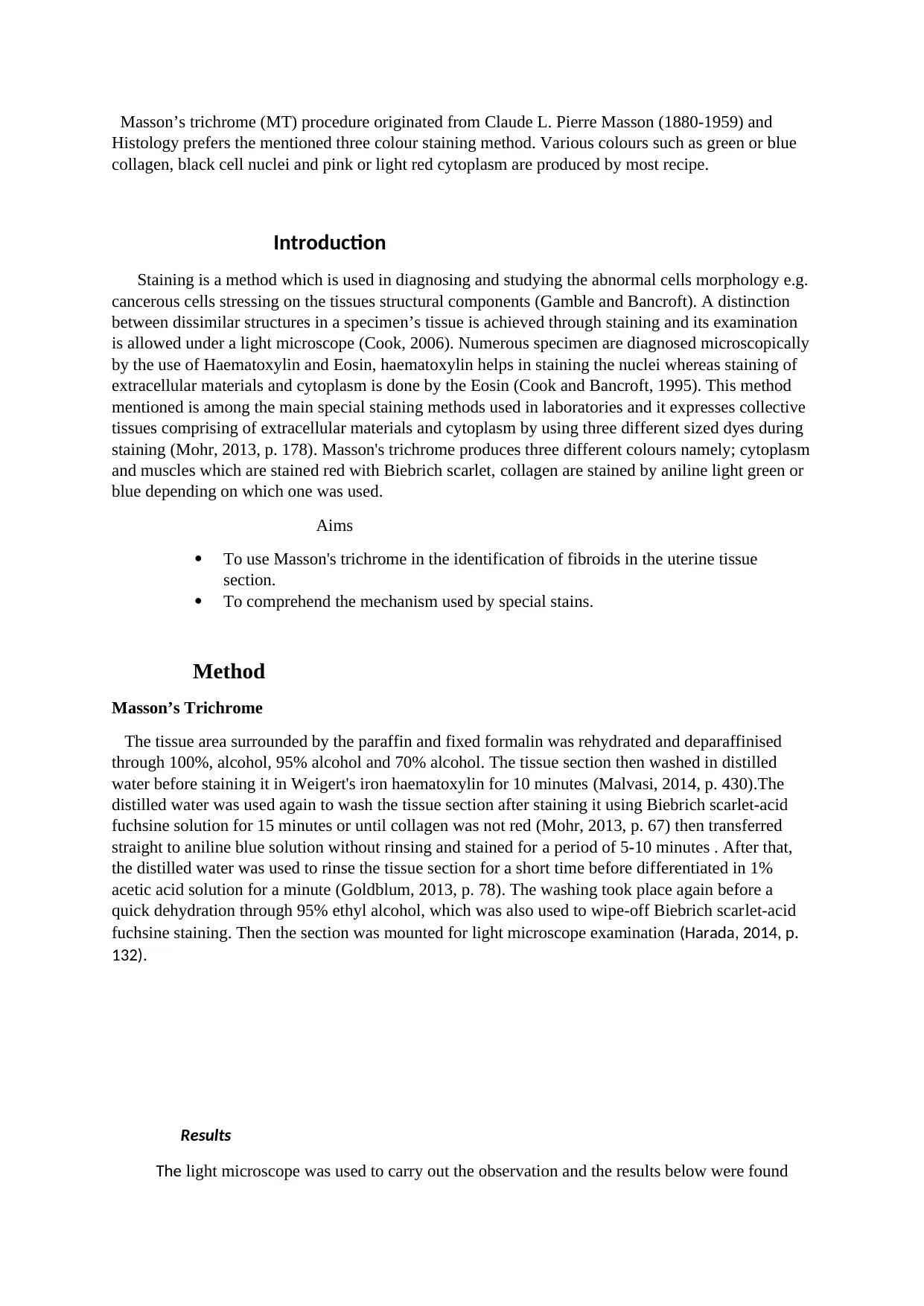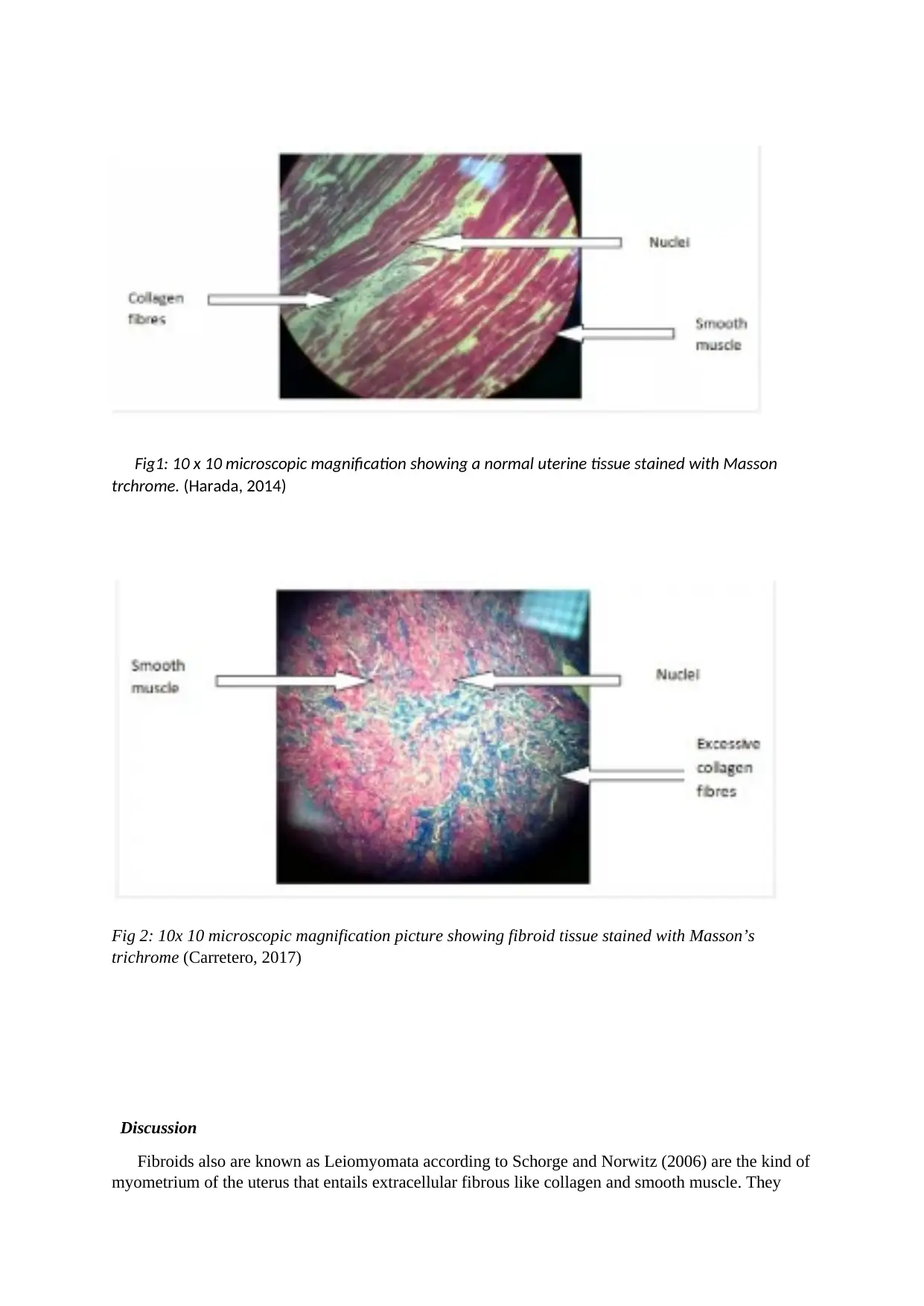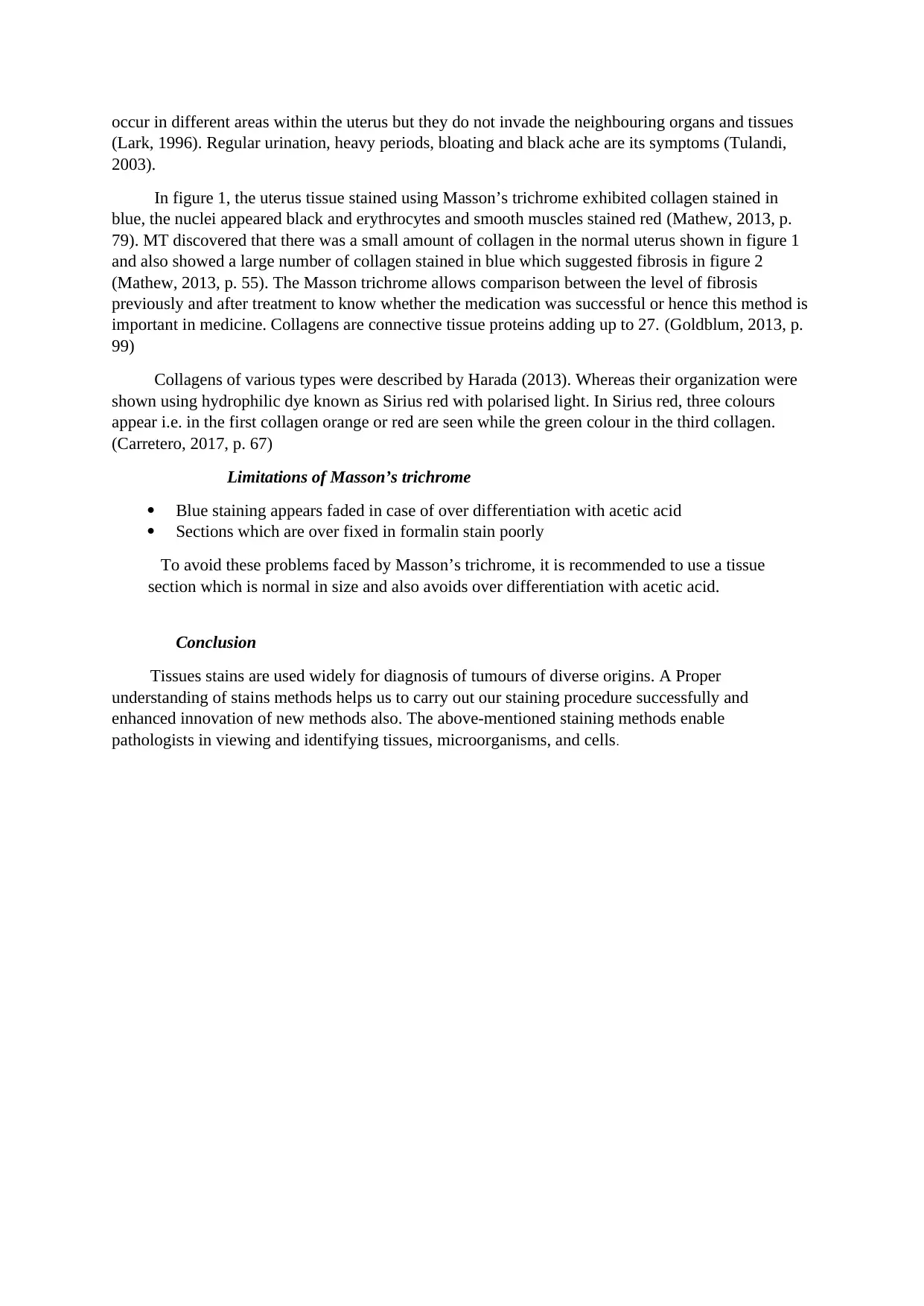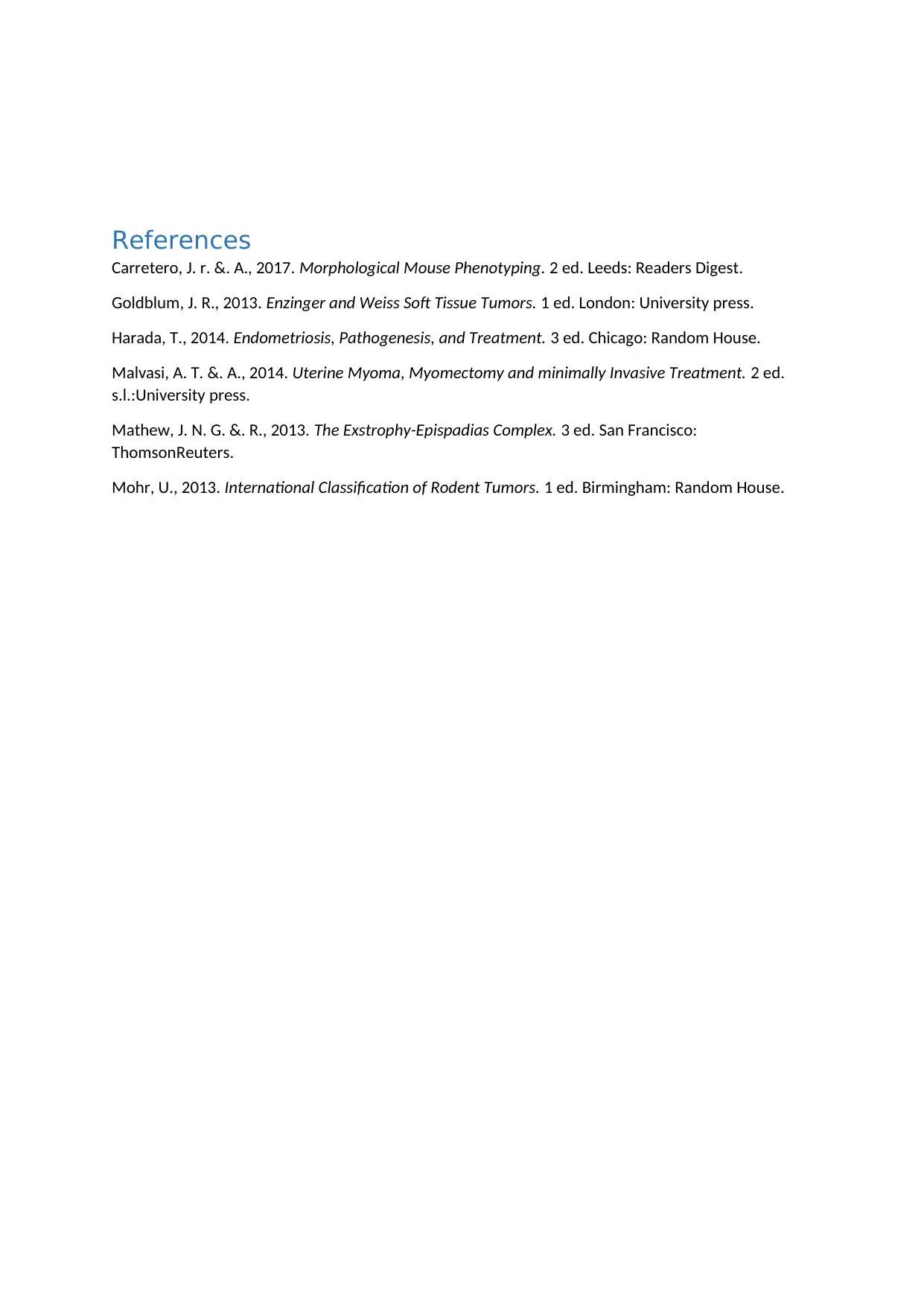Analysis of Uterine Fibroids Using Masson's Trichrome Staining Report
VerifiedAdded on 2020/05/01
|5
|1040
|94
Report
AI Summary
This report examines the application of Masson's trichrome staining in the identification of uterine fibroids. The study begins with an introduction to the Masson's trichrome staining technique, detailing its origins and purpose in histology, emphasizing its use in differentiating tissue structures by producing various colors. The report then outlines the aims, which include using Masson's trichrome to identify fibroids in uterine tissue and understanding the mechanisms of special stains. The methodology describes the step-by-step staining process, including tissue preparation, staining with Weigert's iron hematoxylin, Biebrich scarlet-acid fuchsine, and aniline blue, and subsequent microscopic examination. The results section presents microscopic observations, comparing normal uterine tissue and fibroid tissue stained with Masson's trichrome. A discussion section interprets these findings, explaining the nature of fibroids and the role of Masson's trichrome in visualizing collagen and other tissue components, which is critical in the diagnosis of uterine fibroids and assessment of treatment efficacy. The report concludes by summarizing the importance of tissue stains in diagnosing tumors and the need for a thorough understanding of staining methods.
1 out of 5






![[object Object]](/_next/static/media/star-bottom.7253800d.svg)